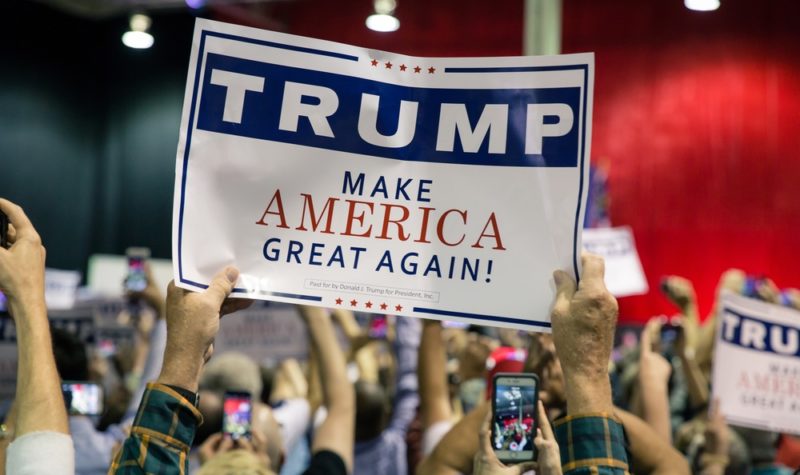Why Donald Trump could be great for the global economy

Building a wall? A ban on Muslims entering the US? Mass deportation of illegal immigrants? Anyone assessing some of Donald Trump’s more outlandish policies might appear well justified in coming to the conclusion that the 45th President of the United States is set be an economic disaster. But it would be a mistake for investors to allow the rhetoric to dominate their perception of what a Trump presidency means for the global economy. In fact, there is a growing sense that much of Trump’s economic agenda could be just what is needed in order to spur global growth.
We have been living in a topsy-turvy world of quantitative easing, zero and negative interest rates, low growth and soaring asset prices. Much of what has transpired since the global financial crash of 2007-09 has set the stage for ‘populist’ events like Brexit and the election of Trump. Despite central banks’ injection of trillions of dollars into the global economy, growth remains subdued, real incomes have stalled (and by some measures are lower than they were before the crisis) and ordinary savers have been punished – all while the rich have seen their wealth soar. The massive levels of inequality that this engenders represent an existential threat to the capitalist free market system. Many believe Trump is the embodiment of this threat; but in fact, he could prove to be the saviour of capitalism.
Central bankers have reached the limits of what they can do to stimulate the economy. There is a growing realisation that the focus has to move away from monetary policy and back to fiscal policy in order to stimulate demand. The evidence for the lack of demand is plain for all to see in the banking system. Despite the fact that banks have been flooded with liquidity and capital by the central banks, lending to the real economy – especially small businesses – has stagnated, leading to weak growth in GDP, productivity and wages. The hope is that demand can be spurred through governments once again taking hold of the levers of the economy through fiscal policy (tax and spending).
Although the Trump team have yet to reveal the finer details of their economic policy, there are several broad themes that are becoming clear. The first and most obvious is that despite the fact that Trump is ostensibly a Republican, his administration looks set to be anything but fiscally conservative. Trump has talked a lot about spending much more on infrastructure as well as cutting taxes for business, in a fiscal programme that could cost as much as $7.2 trillion over ten years, according to some estimates.
And in fact there is a lot to be said for this approach. Much of the infrastructure of the US is dated and not fit for purpose. Meanwhile, the recent trend of US multinationals sheltering cash in foreign jurisdictions is due to the fact that the US has one of the most uncompetitive corporate tax regimes in the world, with a headline rate of 35% versus 20% in the UK, for example. The likes of Apple and Google are sitting on hundreds of billions of dollars in cash that is currently located outside the US. Getting this money repatriated and giving firms incentives to spend and invest is high on the Trump agenda.
Higher spending and lower taxes will provide a shot in the arm for the US economy while raising inflation expectations and providing the Federal Reserve room to continue increasing interest rates. In turn, this will expand banks’ margins and increase the incentives for them to increase lending to the real economy.
We can already see the early indications of this in the reaction of the financial markets. We were told by the mainstream media that a Trump win would be disastrous for the markets and the economy. But so far the reaction has been anything but. After an initial knee-jerk crash on Wednesday, leading indices recovered as investors had time to digest what a Trump presidency might actually mean for the economy, and they have been rallying since then, with the Dow Jones Industrial Average hitting an all-time high on Thursday.
Higher stock prices mean investors are beginning to realise that Trump could be good for growth. Commodities are also rallying, not least that bellwether of global growth – copper. Elsewhere, the bond market is seeing treasury yields rise on the back of higher inflation expectations. The seemingly endless march of bond prices globally could be coming to an end as fiscal policy takes centre stage and talk of ‘secular stagnation’ is put to bed.
All this could signal that the post-financial crisis paradigm of sub-par growth, zero interest rates and stagnating real incomes could be about to come to an end. I am no Trumper (if that’s what they call a Trump supporter), and like countless others I find much of what he has said during his campaign to be distasteful (at best) or indeed frankly alarming and offensive on occasion. However, I think it is fair to say that Trump is already surprising his detractors and could continue to do so in future.
But don’t get me wrong, a Trump presidency also brings plenty of economic risks – not least the ugly spectre of protectionism. But the fact is we just don’t know how much of Trump’s rhetoric will actually translate into policy. There will no doubt be further volatility ahead, but there are also plenty of opportunities opening up. We’ll be talking about some of these in the coming weeks and months.
Comments (0)